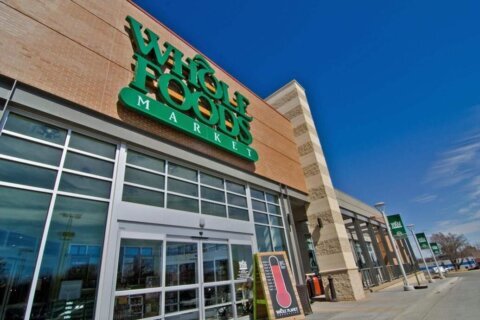Savvy shoppers
White bread or wheat bread? Turkey or beef? Whole milk or skim milk? Grocery shopping used to be simpler than today’s experience, which includes products like gluten-free bread made with brown rice or millet; meat alternatives raised in labs, not on farms; and lactose-free “milks” made from cashews, coconut and rice. “Grocers [are] catering to an increasingly sophisticated consumer who expects a variety of options,” says Leah McGrath, Ingles Supermarkets’ corporate dietitian in Asheville, North Carolina. Save for some tough decisions down the aisles, those options can make you a healthier — not just a smarter — shopper, she and other industry experts say. Expect to see these seven supermarket changes in 2017:
1. No lines
At first, it might feel like stealing: Walk into a store, grab whatever you want and walk out. No lines, no checkout — and no guilt. At Amazon Go, a brick-and-mortar store in Seattle that’s set to open to the public this year, shoppers will be charged for their purchases after their trips, based on technology that can track what they take away. It’s a very Jetson-esque concept, not to mention one that could help you avoid impulse buys at the checkout line, says Collin Payne, an associate professor of marketing at New Mexico State University. Still, it’s helpful to shop with a list to keep your good intentions on track, Payne says.
2. Online ordering
Another way consumers will be increasingly avoiding real-life lines is by shopping and ordering food online instead. “Many retailers are expanding their offerings in this area,” says Bill Bishop, co-founder and chief architect of Brick Meets Click, a food retail advisory and consulting service based in Barrington, Illinois. Online ordering isn’t lazy; in fact, it can promote healthy choices by allowing you to avoid grocery store marketing tricks that encourage high-fat, high-sugar choices, Payne says. “The online environment can really accelerate in a big way the health of the country because now you’re not having to deal with the environmental clutter in the grocery store,” he says.
3. Healthier checkouts
While candy bars, chips and soda tend to be staples near the checkout counter, thanks in part to partnerships between stores and food manufacturers that want to encourage consumers to grab treats they weren’t planning on purchasing, researchers are studying how similar strategies can be used to urge shoppers to pick up healthy foods, too. “These are really simple ideas that can have a large impact” without affecting stores’ bottom lines, Payne says. For example, he’s studying how some point-of-sale systems might soon be able to recognize when lower-income shoppers have benefits remaining that can only be used on fruit and vegetable purchases, allowing cashiers to upsell produce at checkout.
4. Immediate feedback
Plenty of grocery shopping apps promise to help you shop smarter by decoding a food label’s nutritional content and matching it to your goals, but it’s hard to know which apps have staying power, Payne says. What might become more commonplace, though, is grocery stores themselves showing consumers how well their purchases align with dietary guidelines, like the U.S. Department of Agriculture’s “My Plate” concept, by analyzing their receipts. “I think you’ll see within the next five years the ability for third-party organizations or grocery stores themselves to be able to rate their stores and consumers in terms of how healthy purchases are,” Payne says.
5. More ‘meal solutions’
Convenience is king — just ask all the folks who sign up for meal delivery services. Supermarkets don’t want to get left behind, so they, too, are offering more “meal solutions” by, for example, displaying meal ideas at kiosks or providing demonstrations that show how easy healthy meals can be to cook, says Annette Maggi, a registered dietitian and executive director of the Retail Dietitians Business Alliance. McGrath predicts that more “grab-n-go” single-serving items will be available as well “to cater to millennials, boomers and busy working families.” Just be sure you know what you’re reaching for, she adds, since prepared and convenience items are often higher in calories and sodium.
6. Cheaper produce
“It’s what’s on the inside that counts.” Such wisdom applies to pals, partners — and produce. “Retailers are now offering less-than-perfect-looking fruits and vegetables at discount prices, which is helping move this produce off the farm and into consumers’ hands,” Maggi says. The expansion of European “hard discounters” such as Aldi and Lidl in the U.S. will also help shoppers of all income levels afford produce, Bishop says. “They offer a selection of nice-quality fresh fruits and vegetables, including a line of organic products that are priced at close to half what you’d pay in the supermarket for the same item not on sale,” he says.
7. More ‘free-from’ labels
Sugar-free, gluten-free, dairy-free and GMO-free are among the “free from” claims you’ll continue to see gracing product labels, thanks to growing consumer concerns with unfamiliar ingredients and additives. “Consumers want greater transparency to the entire chain of custody of their food, and factor in animal welfare, sustainability metrics and local sources when making purchasing decisions,” Maggi says. Just keep in mind that “what’s on the front of packaging … doesn’t necessarily mean a product is a better or more nutritious choice,” McGrath says. “Read ingredients and the nutrition facts panel, eat fruits and vegetables, and, if you have questions about food or nutrition, get advice from someone with training, education and experience.”
More from U.S. News
How to Make Healthful Dietary Changes Last a Lifetime
6 Healthy Choices at the Gas Station
7 Ways Grocery Shopping Will Change in 2017 originally appeared on usnews.com







